Are you looking for a delicious, yet healthy low-FODMAP, gluten-free sandwich bread? I know I was!
Although I love the ease and flavor of my low-FODMAP Maple Egg Bread, I wanted a low-FODMAP bread with more texture for my daily low-FODMAP lunchbox.
Here is a recipe for a low-FODMAP Multigrain Sandwich Bread that is exactly that. It has the added fiber of oats, quinoa or teff, and the crunch of seeds. But it is still as easy to make as my favorite low-FODMAP Egg Bread.
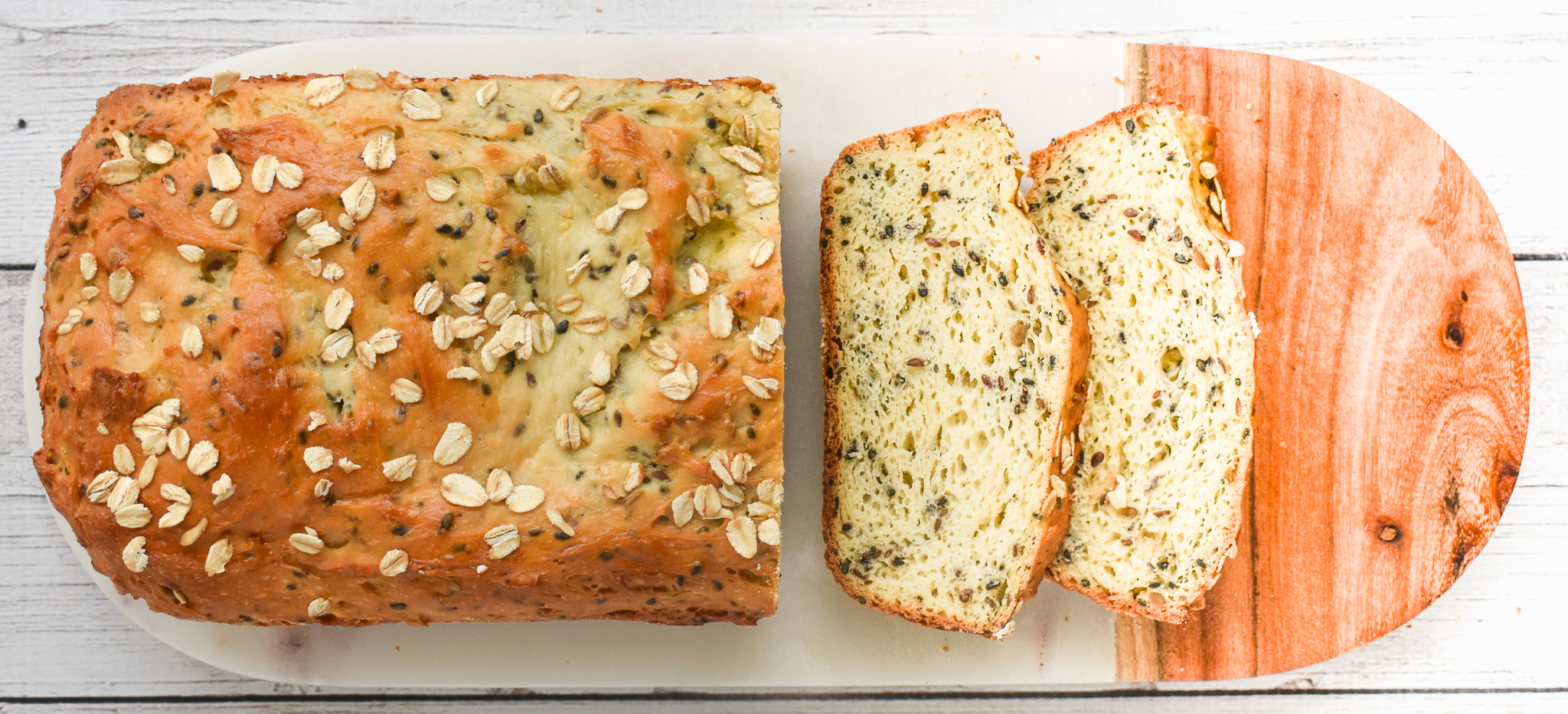
That means no kneading, fancy equipment or complicated steps. You will love this low-FODMAP Multigrain Bread recipe!
Enjoy this delicious low-FODMAP Mutigrain Sandwich Bread with my low-FODMAP Cajun Tuna Salad or in a low-FODMAP Fancy Grilled Cheese Sandwich. My low-FODMAP Packed Lunch blog has some other great tips and ideas.
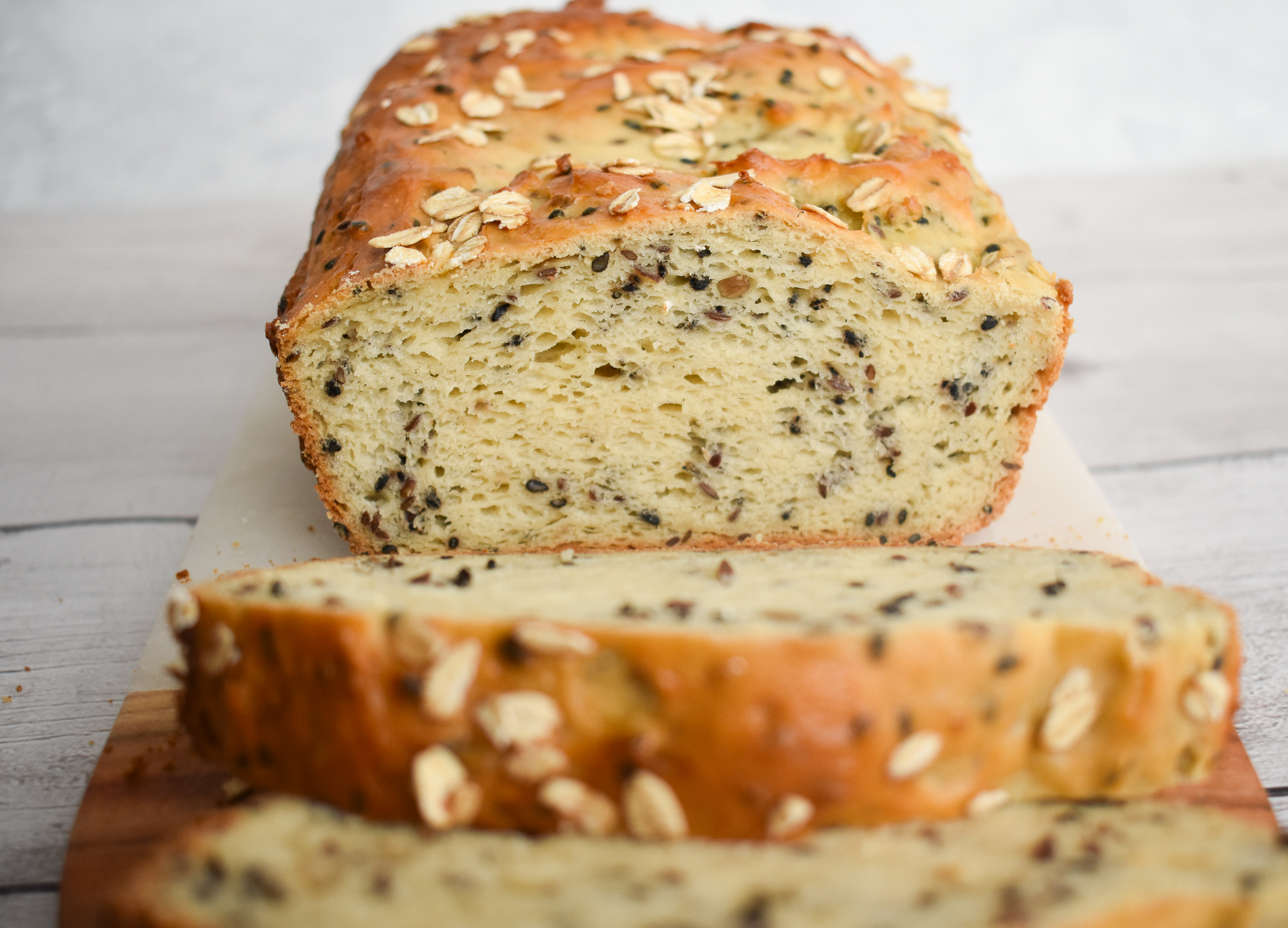

You can also check out over 300 more low-FODMAP recipes on the blog.
Be healthy and happy,
Rachel Pauls, MD
Delicious Low-FODMAP Multigrain Sandwich Bread; Gluten-free, Dairy-free
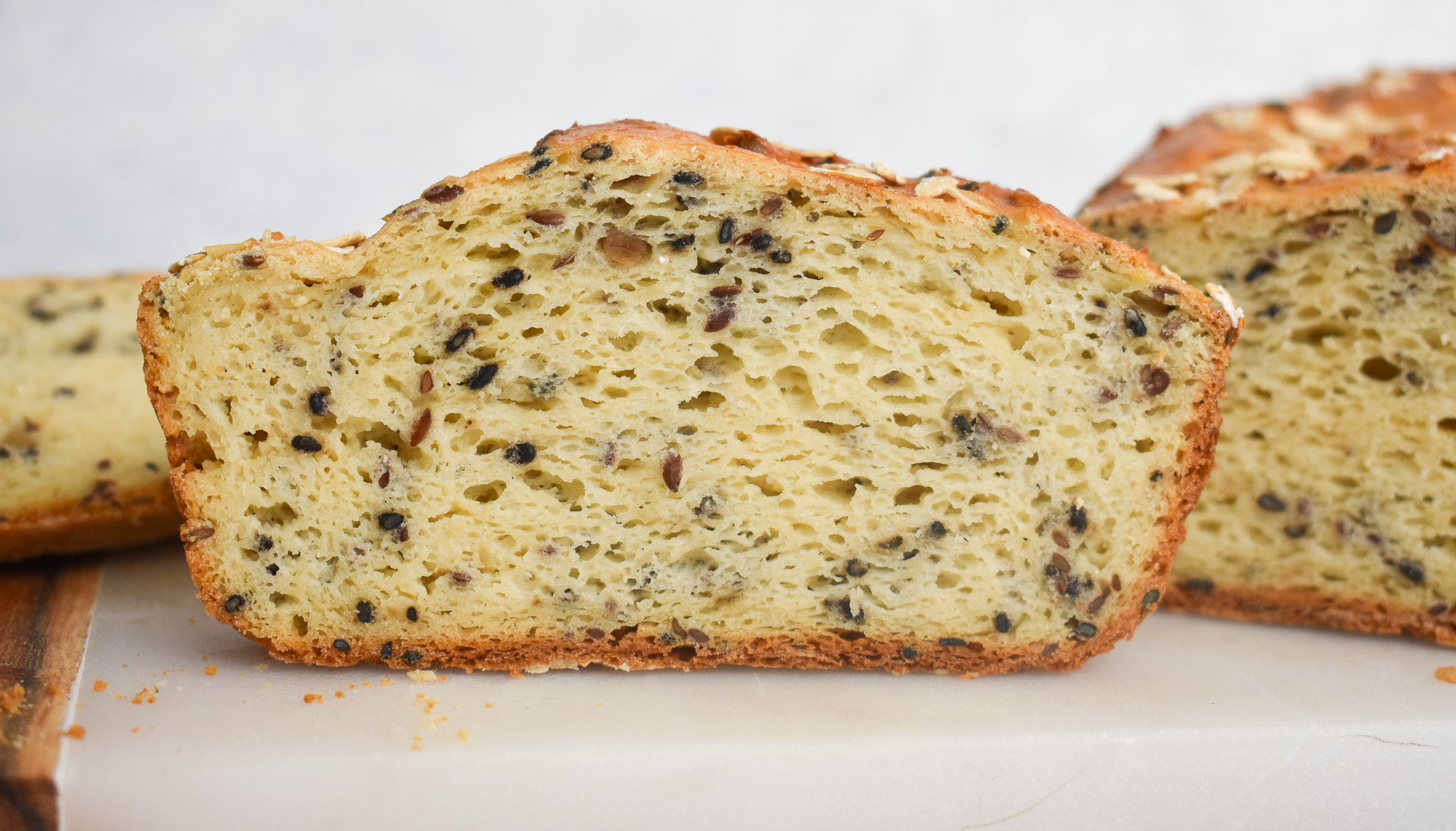

Although this recipe has not been tested, a single serving should be low-FODMAP based on the ingredients.
Modified from recipes of Analise G Roberts, “Gluten-free Baking Classics”
Serves 8
Prep time: 15 min
Rise time: 45-60 min (this could vary, please allow up to 2 hours if necessary)
Bake time: about 50 min
Total time about 2 hours
Bake 400 F
Ingredients
- 2 large eggs
- 3 tbsp canola oil
- 1 & ¾ cups Authentic Foods GF Classical Blend or your preferred low-FODMAP, gluten-free all purpose flour
- This is my fave low-FODMAP gluten-free flour for the consistent baking results, I did a low-FODMAP bake off to test it!
- ¼ cup teff flour, oat flour or quinoa flour
- All will work well, but may result in slightly different textures and tastes to your bread.Try them all!
- I used oat flour
- 1 & ½ tsp xanthan gum (unless added to your low-FODMAP all-purpose flour blend)
- ½ tsp salt
- 1 tsp unflavored gelatin powder
- 2 tbsp sugar
- 1 packet (1/4 ounce) active dry yeast (not quick yeast)
- ¾ cup plus 2 tbsp low-FODMAP milk (such as almond milk for dairy-free or lactose-free), heated to 110 F
- Desired seeds to stir-in (up to 5 tbsp), choose from:
- 2 tbsp sesame seeds (can use traditional or black/brown sesame seeds or combination)
- up to 5 tbsp is one low-FODMAP serving
- 2 tbsp flax seeds (1 tbsp is one low-FODMAP serving)
- 1 tbsp sunflower seeds (1 tbsp is one low-FODMAP serving)
- 1 tbsp poppyseeds (2 tbsp is one low-FODMAP serving)
- I used 2 tbsp black sesame seeds, 2 tbsp flax seeds and 1 tbsp sunflower seeds for my loaf
- 2 tbsp sesame seeds (can use traditional or black/brown sesame seeds or combination)
- Raw oats and additional 1 tbsp seeds for sprinkling on top, if desired
- 1 large egg, beaten with 2 tbsp of water (for egg wash prior to baking, optional)
- Vegetable shortening for greasing
Directions
- Lightly grease a loaf pan and dust with oat flour or your low-FODMAP, gluten-free flour
- Mix 2 eggs and canola oil together in a small bowl
- In a separate large bowl of electric mixer with flat paddle mix the dry ingredients but do not mix in the seeds (those will be later)
- The dry ingredients DO include the dry yeast and gelatin powder
- Quickly add warmed milk, then the egg/oil mixture to the bowl
- Mix until just blended on medium speed
- Scrape down the beaters and then beat at high speed for 3 minutes
- Add desired stir- ins (5 tbsp of) sesame seeds, flax seeds, poppy seeds or sunflower seeds and mix well by hand
- Spoon dough into prepared pan and smooth top with spatula
- Cover with a light cloth and let rise (a slow rise at 80 F is optimal) for about 45-60 min
- Bread is done with rise when it reaches the top of the pan (or very close to that)
- Preheat oven to 400 F and place rack in middle of oven
- Brush top of loaf with egg wash and dust top with 1 tbsp seeds and oats (if desired)
- I only used oats to garnish the top
- Place bread in center of oven for 10 min
- Following 10 minutes cover bread with aluminum foil and bake another 45-50 minutes
- Remove bread when internal thermometer is about 205F
- Let rest for 5-10 minutes, then remove from loaf pan to cool before slicing
This Low-FODMAP Multigrain Bread is soft and delicious!
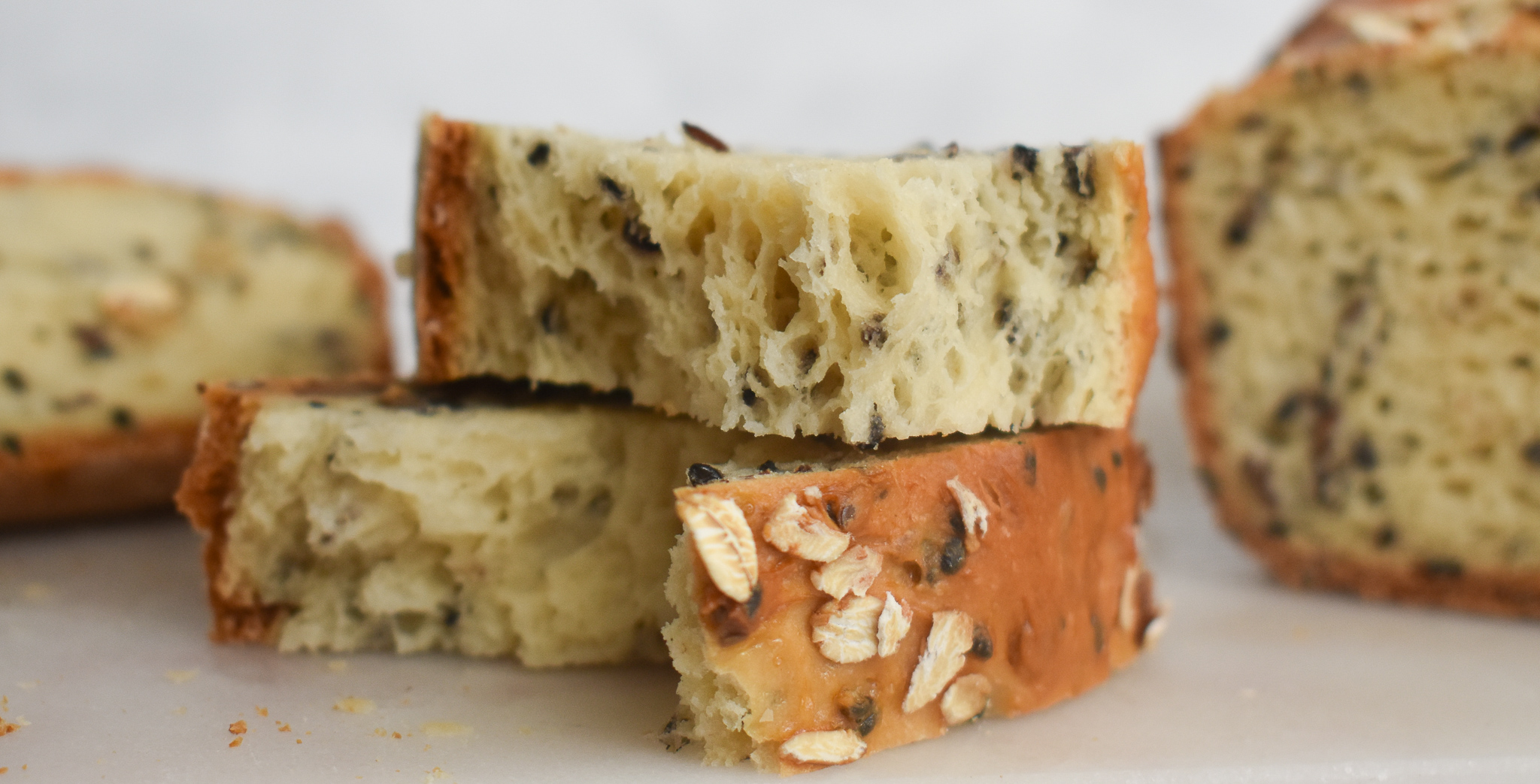




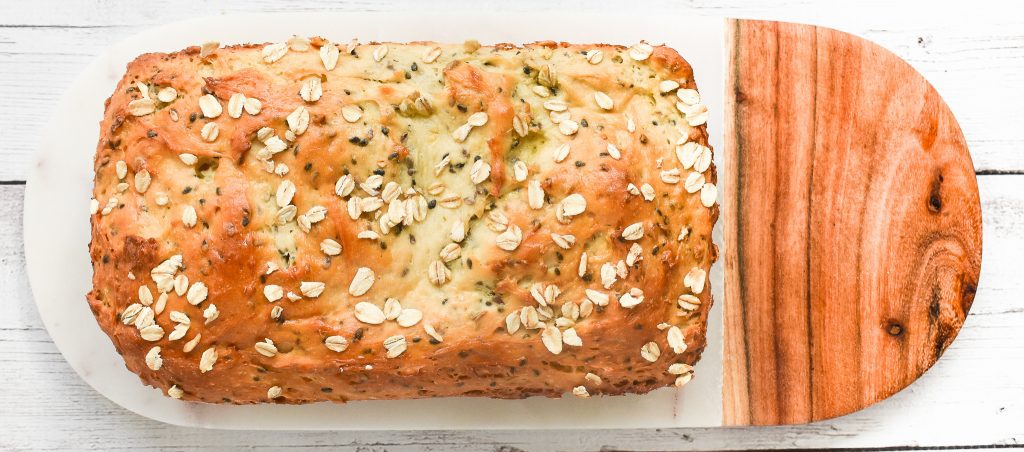
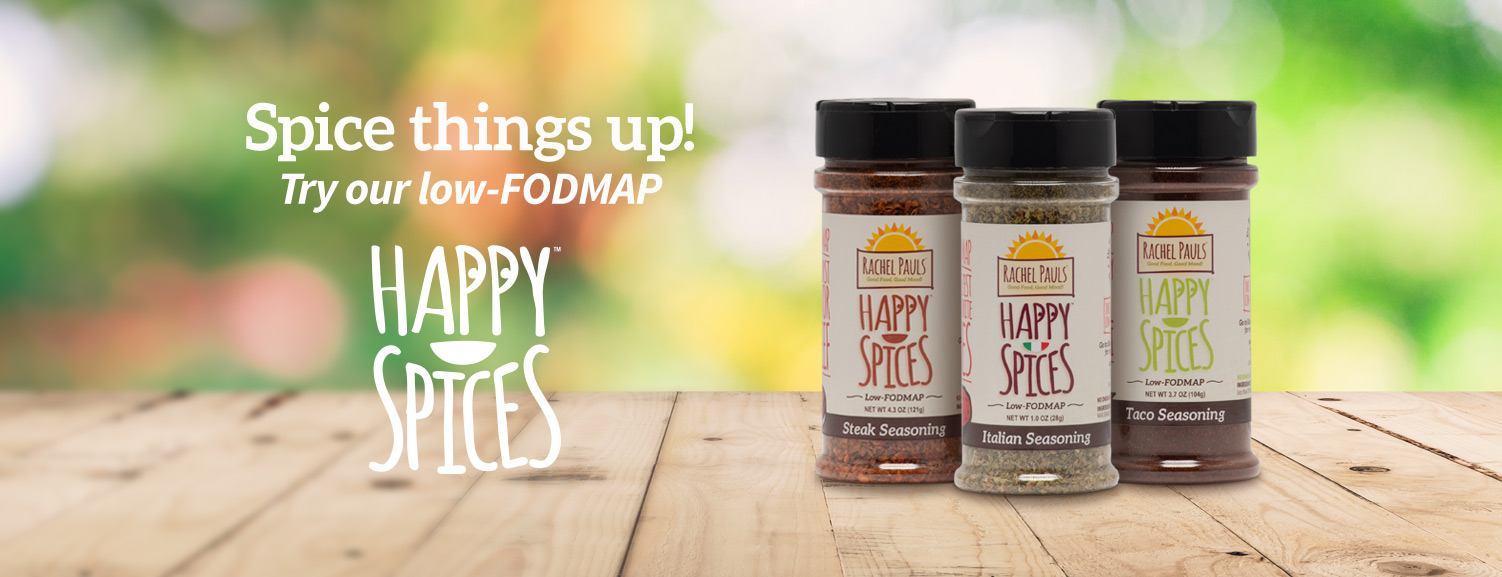




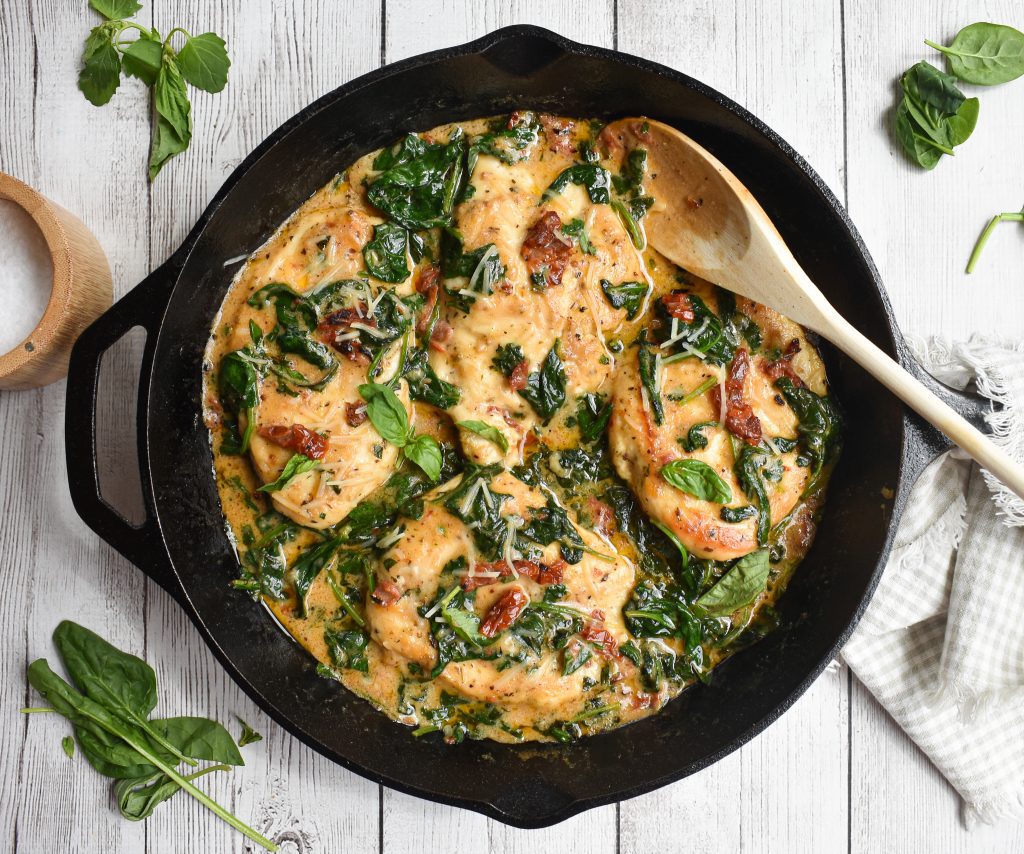
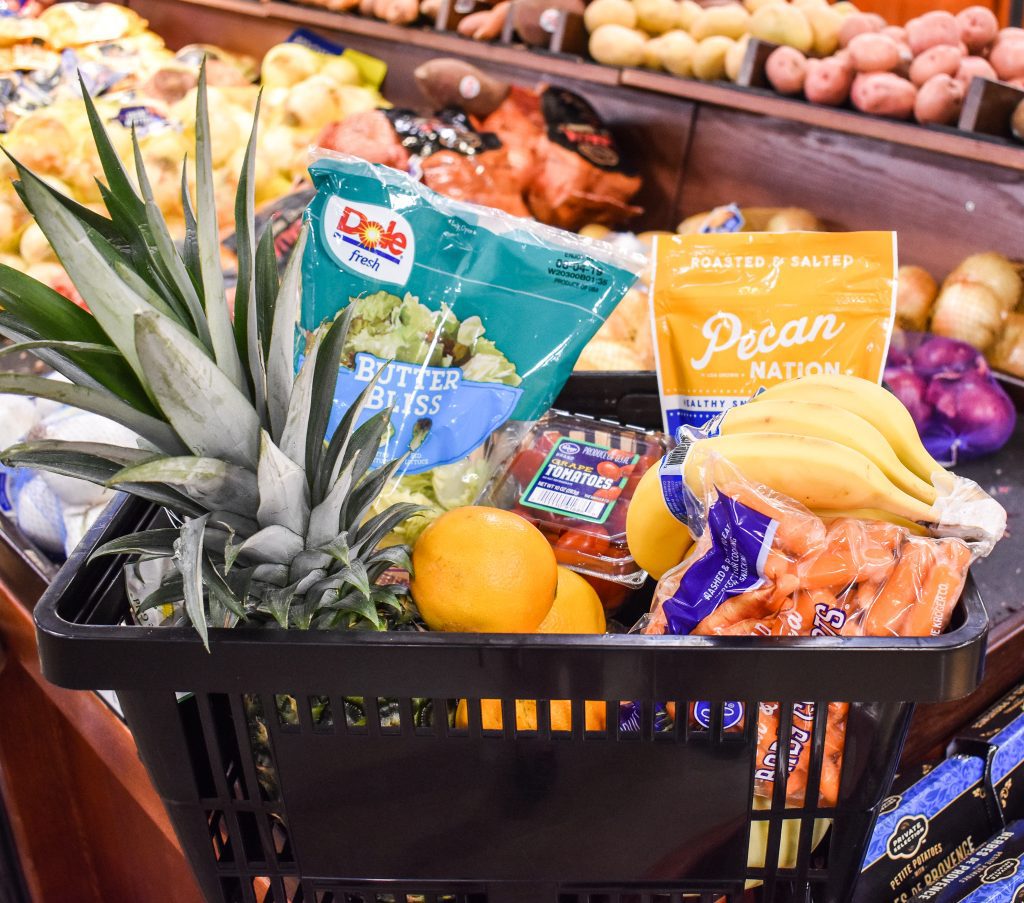


39 Responses
Can the xanthan gum be left out of it? Or can something else be substituted in place of it? Not cheap.
Hi Laura. Thanks for the question. The removal of the xanthan gum will likely negatively impact the texture and consistency of the bread. So we would not recommend removing it and can’t think of a good substitute. Some brands of gluten-free flour may already have xanthan gum in them. Maybe that would be something to consider.
Hi Laura,
Unflavored gelatin can be used to replace xanthan gum. Use the same amount gelatin as xanthan gum called for in your recipe.
Enjoy!
Pamela
(No rating because I haven’t tried the recipe yet.)
Why can’t I use quick yeast? Does this apply to all gluten free baking? I’m new to gluten free LOW-FODMAP baking.
Hi Rosemary. In this recipe an active dry yeast is better for rising.
I love this bread and made it twice. My problem is that the bread doesn’t rise enough and the slices are very thin. I’ve followed all the instructions.
Any advice?
Diana, I am so happy you love the bread and have made it twice! I understand your frustration if it isn’t rising though. Are you using the same flour that I recommend? Sometimes that can make a difference. Gluten-free flours are a little fussier than other flours. You may want to proof your yeast to make sure it is still active, as that is possibly a factor. The other thing that is important is making sure that the milk is warm (but not hot) and that you allow the bread to rise for a good while at about 80 degrees (above room temperature). Sometimes it can take an extra 30 minutes to rise depending on your altitude and other conditions, so you can let it take longer if it needs to. I like to put the bread on my pre-warming oven top since that gives it a warmth that is not too hot. I hope that helps! Thanks again for the question and feedback.
Can I use almond, coconut, or tapioca flour rather than teff, quinoa, or oat? Just trying to avoiding more flours in my shelf! Thank you.
Thanks for the question Sally!
The flours we mention are denser and grittier, so they provide a hearty texture to the bread (like a multigrain). Almond flour would behave very differently, since it is soft and could be oily. Coconut flour is high-FODMAP so we don’t recommend it. Tapioca flour is very fine (like a starch), and would likely make the bread lighter, not the texture of our bread recipe here. Unfortunately, if you want a multigrain bread, then we suggest one of the options above. But, if you have traditional rolled oats, you can blend them in your processor to a fine meal to create your own oat flour! Hope that helps. Good luck 🙂
This looks delicious! Can I skip the gelatin powder, or will it really mess it up? Thanks
Hi Heather,
Thanks for the question. Gluten-free breads can often be denser and have a harder texture. The gelatin provides a stretchiness and pliability to the dough and enables a lighter result with less cracking. We have not tried to make it without the gelatin powder but worry it would not work out. For a Vegan substitute, if you have experience with using it, then Agar Agar can also be helpful as a gelatin substitute (and agar agar is low-FODMAP). Good luck!
So, I’m not a seasoned cook…my crust turned out really hard…did I just cook it too long? The inside was good. My husband wanted me to add more sugar but I don’t know if it’ll affect it negatively or not…
Hi Heather,
It is a little hard to say what happened. It could be related to your oven temperature if it was a little too hot (have you checked your oven recently with an oven thermometer?). Another common issue with gluten-free baking (bread in particular), is the choice of gluten-free flour. They do not all perform the same (many chefs experiment with different products for each type of bread). That could impact the texture of your final product.You may want to read our low-FODMAP Bake Off Blog for some tips on gluten-free baking. Adding a little more sugar would probably not cause negative impact to the recipe though! Good luck 🙂
Thank you for your time? it might be my flour then. I used King Arthur measure for measure.
The recipe calls for using an electric mixer. What if I don’t have one? Can I just use a normal bowl and stir manually?
Thanks for the question Adam,
The electric mixer gives the batter a brisk beating to combine the ingredients and lighten the mixture, as there is no kneading involved for this bread recipe. We have not tried to make it by hand but would be concerned that the results would not be the same. If you do try it, let us know how it works! Good luck.
Hi. Looking forward to trying this recipe, but although yeast is in the list of ingredients, there is no corresponding instruction about when to add the yeast. Thanks!
Hi Mark,
Great to hear from you! The yeast is considered a ‘dry ingredient’ for this recipe. Thus, it should be added with the other dry ingredients as outlined in step 3. Hope that is helpful 🙂
Enjoy and stay in touch!
I can’t have Xhantan gum. It is not good for guy health. Any healthier option? Thank you . Also how many calories has this bread ? 2 ounces slice?
I can’t have Xhantan gum. It is not good for gut health. Any healthier option? Thank you . Also how many calories has this bread ? 2 ounces slice
Thanks for your question. Small amounts of xanthan gum such as in this recipe are generally found to be reasonable for gut health. The xanthan gum is essential to help with the texture of the bread, we do not suggest omitting it.
We are not able to provide nutritional information for our recipes, we apologize for the inconvenience.
Have a wonderful day!
Do you think I could use my bread machine for this bread?
Hi Rachelle,
We do not have experience with a bread machine, but we suspect that this recipe would require modification to make it work. You may prefer to look into gluten-free bread recipes that are designed to be used with a bread maker. Sorry we can’t be more helpful! Good luck.
KitchenAid Mixer
This was my first attempt at making bread and it did not go well lol. The dough didn’t rise almost at all (I even gave it an extra 45 minutes beyond what the recipe said because not much was happening) so I ended up with a loaf that’s about 2 inches tall, if that. I mentioned afterwards to my mom that the recipe said to mix on high for 3 minutes and she said I likely killed the yeast. So, to those of you with a KitchenAid mixer, the instruction manual says to use speeds 1 or 2 for bread. Definitely do not use the high speed! It also comes with a dough hook that I might attempt to use next time instead of the flat paddle.
Also, note that it says on the Authentic Foods bag that you should not scoop the flour directly from the bag, but instead you should put it in a plastic container and shake it up first. Of course I didn’t see that comment until after I mixed everything together, but luckily I weighed my flour instead of just using 1 3/4 cups. Would be awesome if they would list the grams for the dry ingredients in the recipes since that is far more accurate.
Hi Diana,
Sorry to hear that. Bread can be quite tricky, we agree. We have never done that method with the flour and our measurement was fine using cups. Also, not all KitchenAid mixers have the same ‘power’ and newer machines may need to be on lower settings, if your manual suggests. Thanks for your comments.
If possible, would you be able to weigh the flour next time you make it and let us know how much you’re using? When I added my flour, I scooped out the 1 3/4 cups and it weighed significantly more than what the bag says 1 3/4 cups should weigh, so I removed a bunch of the flour until it said I had the exact weight (the bag says 1/4 cup is 32g, so 1 3/4 cups would be 224g). So if you’re not weighing or fluffing like the bag says to do, maybe I also didn’t have enough flour.
Hi Diana,
We want to clarify. We do not aerate our flour in the method you describe, but we do keep transfer it to a large resealable bag as we often store our flours in the freezer for additional shelf life. That likely does result in a less compact flour for measuring. You are correct that flour should not be packed, and should be ideally measured as your bag suggested. However, it is not likely that the discrepancy is the cause for your uprisen bread. It may be that the yeast had been killed (as you say), or expired, or that your other flour blends were heavy and needed 2 or more hours to rise. We have also had our share of disappointments so do not fret! However, we will post our weights in grams next time we use this recipe. Thank you again 🙂
This was my first attempt at your recipe and it did not go well. I think it had to do with the active dry yeast. Can you please explain if it goes in dry or should I follow the directions on the yeast packaging and then add it to the recipe with the warm almond milk. Any suggestions would be greatly appreciated.
Hi Linda!
Sorry to hear that. We aren’t sure about what the ‘instructions on your yeast’ say. However, the yeast is meant to be put in dry, with the other dry ingredients. The warmth and moisture of the milk should activate it.
However, breads are a little tricky especially when gluten-free. If you are using different flours, or other changes it could impact the rise. Furthermore, sometimes it could take twice as long to rise if your kitchen is a different temperature or altitude. Just a heads up. Good luck next time!
Hi there, thanks for the response! The flour that I used was Bob’s Red Mill gluten-free 1:1 baking flour as we can not find your brand. When I try the recipe again, I will add the yeast to the dry ingredients, but would you recommend a different flour?
Linda,
We have not tried the blend you are using so we cannot say for certain that it would make a big difference. If your brand has xanthan gum added already, that could contribute a bit to a difference in texture. However if you did not add the yeast at the right time, then that would most likely account for the trouble you had. In general, we are big fans of the flour brand we suggest. We do find that it results in the best quality gluten-free baking. We have been able to find it at several online vendors for fairly reasonable prices when purchased in bulk. Good luck!
Bread dough did not rise
I always proof my yeast. It was live and I use a thermometer for the milk temperature. I used a gluten free flour mix that has xanthum gum added. So other than reading the comment about the speed of the mixer, I can.t Gifu really out why it didn’t rise. I let if proof for over 1 hour. Still nothing. A small dense loaf that tasted good but the texture was awful due to
Lack of rise.
I made a second batch the same night. Did not change anything and let it rise for 2 hours. Yay! It rose and is in the oven now. I think maybe the the brand of gluten free flour I used may be the key. Everything else was exactly as in the recipe and the directions.
Hi Penni,
GF flours vary, and rising time is very dependent on multiple factors. Glad you were patient the second time. We are sorry you were not satisfied with the recipe and hope you consider increasing your star rating if you enjoyed it after all 🙂
Unfortunately this recipe is not realistic for regular people. I can’t afford all of these ingredients.
can gelatin be substituted for something else, or can it be left out?
Hi Tonje,
Thanks for the question. The gelatin helps with the texture and elasticity of the bread. Gluten-free bread making is more tricky than other breads. We have not tried substituting with any other ingredient.
If I’m someone who has developed an egg intolerance with SIBO, would eggs baked into a bread like this still be safe to consume?
Hi there,
We apologize but we aren’t sure the answer to this question. Please check with your health care provider. Best wishes.